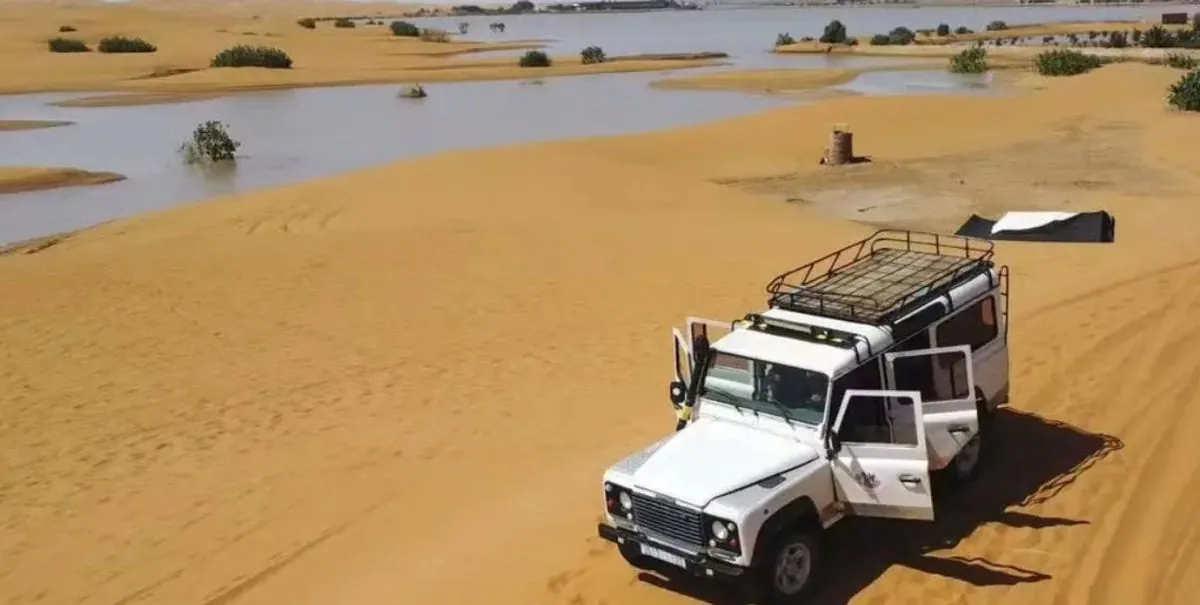Floods in the Moroccan desert revived a lake that had been dry for 50 years: the place is of great ecological importance - photos
Kyiv • UNN
Rare torrential rains in the Sahara Desert in southeastern Morocco have revived Lake Iriki, which had been dry for 50 years. The 13x11 km lake is of great ecological importance for migratory birds between Europe and Africa.

As a result of a rare phenomenon, the Sahara Desert has been flooded in southeastern Morocco. Exceptional heavy rains in the Sahara last month revived a lake that had been dry for more than 50 years in the province of Zagora.
Written by UNN with references to the Associated Press and EFE.
An unusual downpour has created lakes of blue water among the palm trees and dunes of the Sahara Desert, revitalizing some of its most drought-stricken regions. Heavy rains have created water lagoons in the middle of the dunes of Morocco's Merzouga Desert and revived a lake that had been dry for more than 50 years in the Zagora province.
For reference
The torrential rains in early September that caused flooding and killed 18 people in Morocco were "exceptional" and unusual due to the large amount of precipitation - from 50 to 250 millimeters - that fell in a very short period of time.

On the other hand, the droughts of the previous 6 years created problems for most of Morocco: they forced farmers to leave their fields unseeded and cities and towns to have problems with water consumption.
The recent rains, which meteorologists have called an extratropical storm, could change the region's climate for months or even years. This is because the air holds more moisture and thus causes more evaporation and contributes to more storms.
Lake Iriki is filled with water for the first time since 1968
Approximately 300 kilometers southwest of Morocco's Merzouga Desert, in the Zagora region, which is 46% dune, exceptional storm rains and flooding in early September revived Lake Iriki. This area is of great ecological importance for migratory birds that make their way between Europe and sub-Saharan Africa.
On September 9, Adel Mouman, a researcher specializing in satellite analysis at Ibn Tofail University in Kenitra, announced the restoration of water in the lake. The expert analyzed the impact of the floods in the area using images from the Sentinel satellite.
The last time this lake had water was in 1968. When I saw this, we immediately contacted nomads in the area who confirmed that there was water

The researcher emphasizes that the lake is 13 kilometers long and 11 kilometers wide, a surface that is also unprecedented.
Flood destroys prison in Nigeria: 281 inmates escape16.09.24, 00:06 • 18929 views
NASA also published a satellite image - it was taken on September 10 - showing the lake and other bodies of water in the area. The agency compared this photo with one taken a year earlier, which did not show any water.

Scientific paradise
Mustafa Fauzi, ANDZOA's territorial director in Zagora, told EFE by phone from Zagora that the lake has now revived the area's "ecological value".
The expert added that the disappearance of water in the lake has led to a decrease in the frequency of migratory birds returning to Europe. This phenomenon is also emphasized by Spanish ornithologists.
The rehabilitation of Lake Iriki is one of our main goals because of its ecological importance, and for scientific tourism it is like a scientific paradise
Iriki, which is located in an isolated desert area, will continue to be the subject of research by the University of Mumani.

Experts promise to return to the site to check on the health of various bird species that have not been there for 50 years.